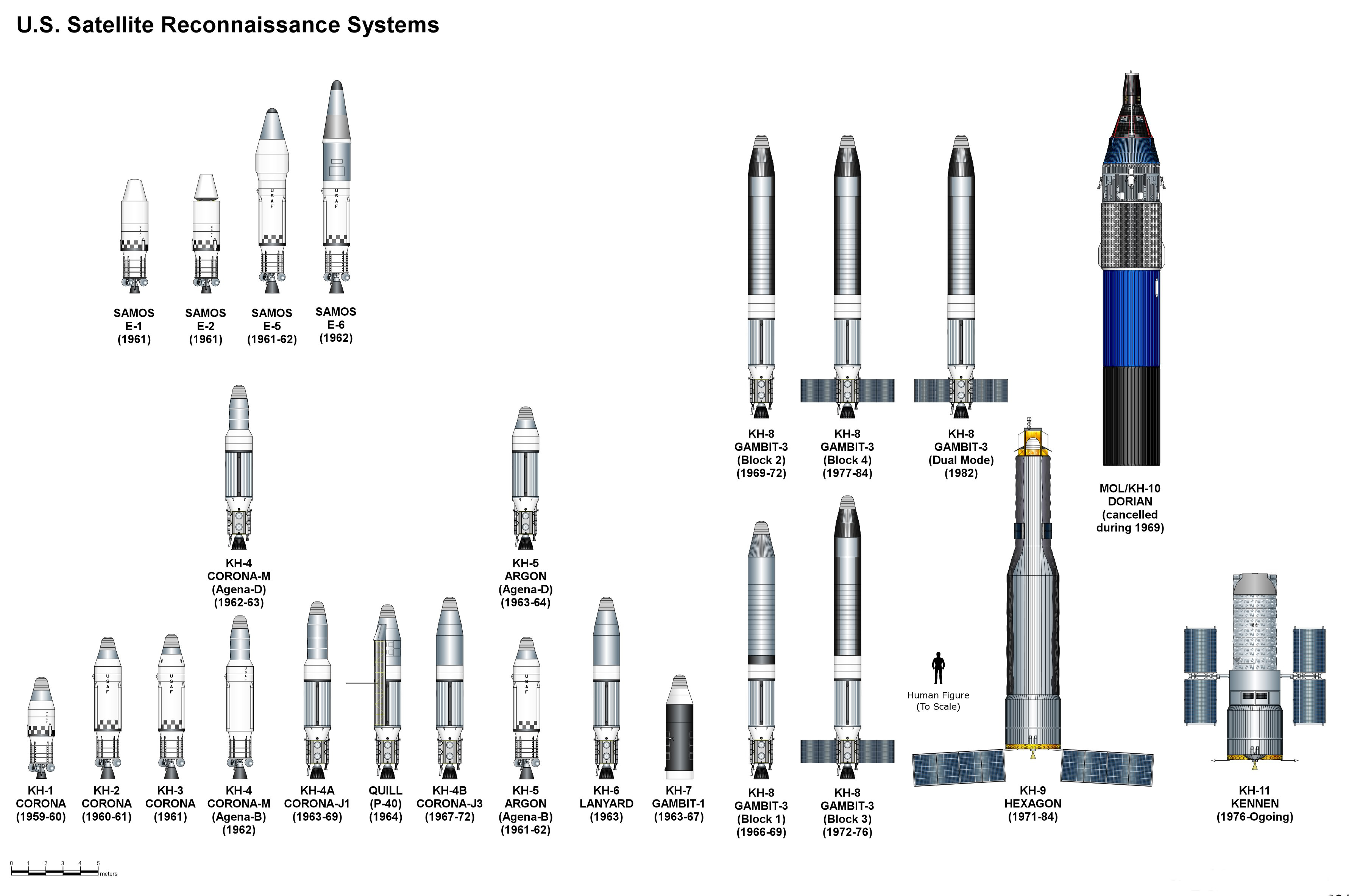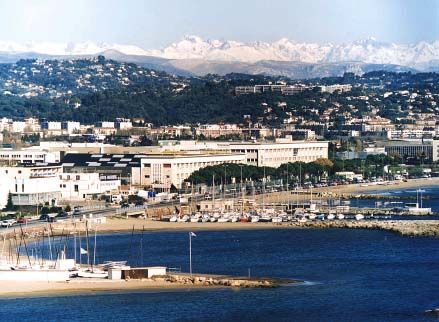|
Clémentine (satellite)
''Clémentine'' is a small satellite built by Alcatel Space (now Thales) for the French DGA, ostensibly "to study the Earth's radio-electrical environment from space." It is a successor to the Cerise satellite. ''Jonathan's Space Report.'' #413. December 5, 1999. References Satellites of France Spacecraft launched in 1999 Spacecraft launched by Ariane rockets[...More Info...] [...Related Items...] OR: [Wikipedia] [Google] [Baidu] |
Reconnaissance Satellite
A reconnaissance satellite or intelligence satellite (commonly, although unofficially, referred to as a spy satellite) is an Earth observation satellite or communications satellite deployed for military or intelligence applications. The first generation type (i.e., Corona and Zenit) took photographs, then ejected canisters of photographic film which would descend back down into Earth's atmosphere. Corona capsules were retrieved in mid-air as they floated down on parachutes. Later, spacecraft had digital imaging systems and downloaded the images via encrypted radio links. In the United States, most information available about reconnaissance satellites is on programs that existed up to 1972, as this information has been declassified due to its age. Some information about programs before that time is still classified information, and a small amount of information is available on subsequent missions. A few up-to-date reconnaissance satellite images have been declassified o ... [...More Info...] [...Related Items...] OR: [Wikipedia] [Google] [Baidu] |
Alcatel Space
Thales Alenia Space () is a Franco-Italian aerospace manufacturer. A joint venture between the French technology corporation Thales Group (67%) and Italian defense conglomerate Leonardo (33%), the company is the largest satellite manufacturer in Europe. It is headquartered in Cannes, France. Thales Alenia Space designs and builds various space-related products, notably manufacturing numerous ranges of satellites for telecommunications, navigation, earth observation and space exploration purposes. The company is the second largest industrial participant in the International Space Station (ISS), having produced the European Space Agency's (ESA) modules for the ISS. It is also building satellites for Galileo, a European global satellite navigation system (GSNS). History Thales Alenia Space arose as a result of the French defense electronics specialist Thales Group deciding to buy out the participation of Alcatel in two joint-ventures between France's Alcatel and Italy's Finm ... [...More Info...] [...Related Items...] OR: [Wikipedia] [Google] [Baidu] |
Surrey Satellite Technology
Surrey Satellite Technology Ltd, or SSTL, is a company involved in the manufacture and operation of small satellites. A spin-off company of the University of Surrey, it is presently wholly owned by Airbus Defence and Space. The company began out of research efforts centred upon amateur radio satellites, known by the UoSAT (University of Surrey Satellite) name or by an OSCAR (Orbital Satellite Carrying Amateur Radio) designation. SSTL was founded in 1985, following successful trials on the use of commercial off-the-shelf (COTS) components on satellites, cumulating in the ''UoSat-1'' test satellite. It funds research projects with the university's Surrey Space Centre, which does research into satellite and space topics. In April 2008, the University of Surrey agreed to sell its majority share in the company to European multinational conglomerate EADS Astrium. In August 2008, SSTL opened a US subsidiary, which included both offices and a production site in Denver, Colorado; [...More Info...] [...Related Items...] OR: [Wikipedia] [Google] [Baidu] |
Ariane 4
The Ariane 4 was a European expendable space launch system, developed by the ''Centre national d'études spatiales'' (CNES), the French space agency, for the European Space Agency (ESA). It was manufactured by ArianeGroup and marketed by Arianespace. Since its first flight on 15 June 1988 until the final flight on 15 February 2003, it attained 113 successful launches out of 116 total launches. In 1982, the Ariane 4 program was approved by ESA. Drawing heavily upon the preceding Ariane 3, it was designed to provide a launcher capable of delivering heavier payloads and at a lower cost per kilogram than the earlier members of the Ariane family. The Ariane 4 was principally an evolution of the existing technologies used, as opposed to being revolutionary in its design ethos; this approach quickly gained the backing of most ESA members, who funded and participated in its development and operation. Capable of being equipped with a wide variety of strap-on boosters, the Ariane 4 gaine ... [...More Info...] [...Related Items...] OR: [Wikipedia] [Google] [Baidu] |
Guiana Space Centre
The Guiana Space Centre (french: links=no, Centre spatial guyanais; CSG), also called Europe's Spaceport, is a European spaceport to the northwest of Kourou in French Guiana, a region of France in South America. Kourou is located approximately north of the equator, at a latitude of 5°. In operation since 1968, it is suitable as a location for a spaceport, because of its equatorial location and open sea to the east. The European Space Agency (ESA), the European Union Agency for the Space Programme (EUSPA), the French space agency CNES (National Centre for Space Studies), the Space Agency of the Republic of Azerbaijan (Azercosmos) and the commercial company Arianespace conduct launches from Kourou. It was used by the ESA to send supplies to the International Space Station using the Automated Transfer Vehicle. History In 1964 Guiana was selected to become the spaceport of France, replacing France's first launch site Centre interarmées d'essais d'engins spéciaux in Hammag ... [...More Info...] [...Related Items...] OR: [Wikipedia] [Google] [Baidu] |
ELA-2
ELA-2, short for Ensemble de Lancement Ariane 2 ( French for Ariane Launch Area 2), was a launch pad at the Centre Spatial Guyanais in French Guiana. It was used by Arianespace for two Ariane 3 launches (V17 in 1986, V25 in 1988), the second Ariane 2 launch in 1987 (the 20th Ariane launch), and all 116 Ariane 4 launches between 1988 and 2003. Following the retirement of the Ariane 4 in favour of the Ariane 5, ELA-2 was deactivated. In September 2011 the pad's mobile service tower was demolished using explosives. See also *ELA-1 *ELA-3 ELA-3 (french: Ensemble de Lancement Ariane 3, lit=Ariane Launch Complex 3), is a launch pad and associated facilities at the Centre Spatial Guyanais in French Guiana. ELA-3 is operated by Arianespace as part of the expendable launch system f ... References Guiana Space Centre {{rocketry-stub ... [...More Info...] [...Related Items...] OR: [Wikipedia] [Google] [Baidu] |
Geocentric Orbit
A geocentric orbit or Earth orbit involves any object orbiting Earth, such as the Moon or artificial satellites. In 1997, NASA estimated there were approximately 2,465 artificial satellite payloads orbiting Earth and 6,216 pieces of space debris as tracked by the Goddard Space Flight Center. More than 16,291 objects previously launched have undergone orbital decay and entered Earth's atmosphere. A spacecraft enters orbit when its centripetal acceleration due to gravity is less than or equal to the centrifugal acceleration due to the horizontal component of its velocity. For a low Earth orbit, this velocity is about ; by contrast, the fastest crewed airplane speed ever achieved (excluding speeds achieved by deorbiting spacecraft) was in 1967 by the North American X-15. The energy required to reach Earth orbital velocity at an altitude of is about 36 MJ/kg, which is six times the energy needed merely to climb to the corresponding altitude. Spacecraft with a perigee belo ... [...More Info...] [...Related Items...] OR: [Wikipedia] [Google] [Baidu] |
Sun-synchronous Orbit
A Sun-synchronous orbit (SSO), also called a heliosynchronous orbit, is a nearly polar orbit around a planet, in which the satellite passes over any given point of the planet's surface at the same local mean solar time. More technically, it is an orbit arranged so that it precesses through one complete revolution each year, so it always maintains the same relationship with the Sun. Applications A Sun-synchronous orbit is useful for imaging, reconnaissance, and weather satellites, because every time that the satellite is overhead, the surface illumination angle on the planet underneath it is nearly the same. This consistent lighting is a useful characteristic for satellites that image the Earth's surface in visible or infrared wavelengths, such as weather and spy satellites, and for other remote-sensing satellites, such as those carrying ocean and atmospheric remote-sensing instruments that require sunlight. For example, a satellite in Sun-synchronous orbit might ascend acros ... [...More Info...] [...Related Items...] OR: [Wikipedia] [Google] [Baidu] |
Direction Générale De L'armement
The Direction générale de l’armement (DGA; English: Directorate General of Armaments), is the French Government Defence procurement and technology agency responsible for project management, development and purchase of weapon systems for the French military.(Nuclear warheads and nuclear submarine power plants are designed by the division of military applications of the Commissariat à l’énergie atomique (CEA)). The DGA's mission is to prepare the future of French defense systems, equip the French armed forces and promote French defense industry exports. Armament project coordination The DGA coordinates armament projects with the industry in France, within Europe, but also with customers for export. Together with the Europe of Defence organisation, the DGA promotes the development of armament projects in co-operation and contributes to the development of the European Defence Agency. Fifteen cooperative armament projects are under way. The OCCAr (Joint Organisation of Co-opera ... [...More Info...] [...Related Items...] OR: [Wikipedia] [Google] [Baidu] |
Cerise (satellite)
Cerise (French for "cherry") was a French military reconnaissance satellite. Its main purpose was to intercept HF radio signals for French intelligence services. With a mass of 50 kg, it was launched by an Ariane rocket from Kourou in French Guiana at 17:23 UT, 7 July 1995. Cerise's initial orbital parameters were period 98.1 min, apogee 675 km, perigee 666 km, and inclination 98.0 deg. On 24 July 1996 it was hit by a catalogued space debris object from an Ariane rocket, making it the first verified case of an accidental collision between two artificial objects in space. The collision (with relative velocity of 14.8 km/s) tore off a 2.8-2.9 metre (9.2-9.5 foot) portion of Cerise's gravity-gradient stabilization boom, which left the satellite severely damaged and tumbling with a limited attitude control system. Novel magnetic control algorithms were used to re-stabilise the otherwise undamaged microsatellite to regain almost full operational mission capability. ... [...More Info...] [...Related Items...] OR: [Wikipedia] [Google] [Baidu] |
Satellites Of France
A satellite or artificial satellite is an object intentionally placed into orbit in outer space. Except for passive satellites, most satellites have an electricity generation system for equipment on board, such as solar panels or radioisotope thermoelectric generators (RTGs). Most satellites also have a method of communication to ground stations, called Transponder (satellite communications), transponders. Many satellites use a Satellite bus, standardized bus to save cost and work, the most popular of which is small CubeSats. Similar satellites can work together as a group, forming Satellite constellation, constellations. Because of the high launch cost to space, satellites are designed to be as lightweight and robust as possible. Most communication satellites are radio Broadcast relay station, relay stations in orbit and carry dozens of transponders, each with a bandwidth of tens of megahertz. Satellites are placed from the surface to orbit by launch vehicles, high enough to ... [...More Info...] [...Related Items...] OR: [Wikipedia] [Google] [Baidu] |
Spacecraft Launched In 1999
A spacecraft is a vehicle or machine designed to fly in outer space. A type of artificial satellite, spacecraft are used for a variety of purposes, including communications, Earth observation, meteorology, navigation, space colonization, planetary exploration, and transportation of humans and cargo. All spacecraft except single-stage-to-orbit vehicles cannot get into space on their own, and require a launch vehicle (carrier rocket). On a sub-orbital spaceflight, a space vehicle enters space and then returns to the surface without having gained sufficient energy or velocity to make a full Earth orbit. For orbital spaceflights, spacecraft enter closed orbits around the Earth or around other celestial bodies. Spacecraft used for human spaceflight carry people on board as crew or passengers from start or on orbit (space stations) only, whereas those used for robotic space missions operate either autonomously or telerobotically. Robotic spacecraft used to support scientific res ... [...More Info...] [...Related Items...] OR: [Wikipedia] [Google] [Baidu] |



